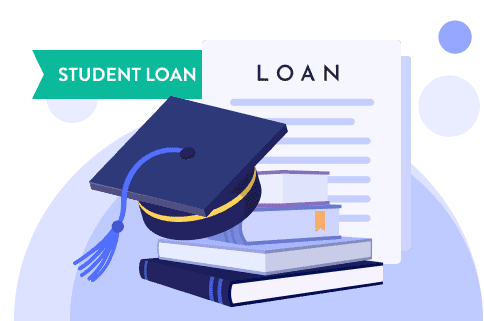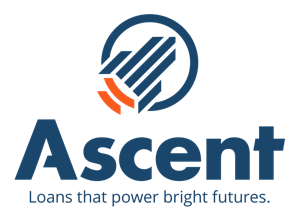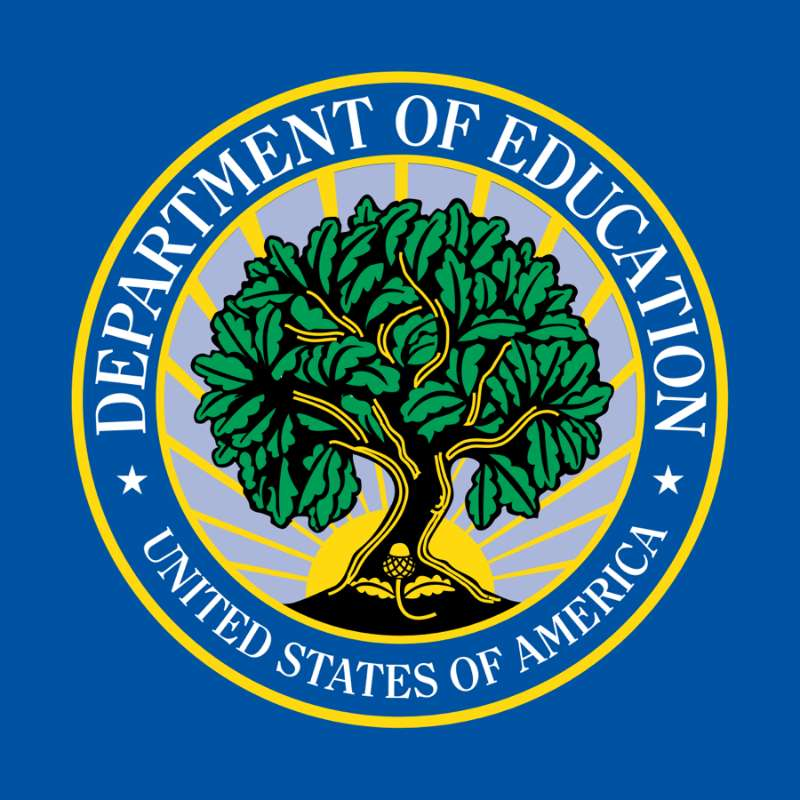Best Student Loans in Wisconsin of 2024

Updated: December 28, 2023
Advertising & Editorial Disclosure
The escalating price tag of higher education in Wisconsin is more than a headline; it's a pressing concern that could potentially derail your academic ambitions. Fortunately, the best student loans in Wisconsin can be a lifeline, enabling you to pursue your educational goals without compromising your financial future.
According to MoneyGeek's analysis, College Ave is the best overall lender of student loans in Wisconsin. Consider Earnest if you're looking for the lowest interest rates or Ascent if you have bad credit. MPower Financing is ideal if you're an international student, while Discover is an excellent choice if you need a co-signer.
Understanding Student Loans
Student loans are financial tools designed to bridge the gap between your educational aspirations and your current financial resources. They offer a way to cover the myriad costs associated with higher education, from tuition fees to living expenses.
The mechanics of a student loan are relatively straightforward. You borrow a sum of money that you agree to pay back, usually with interest added. Repayment generally kicks in after you've either graduated or dropped below full-time student status, and it involves making regular payments to cover both the principal and the interest.
You'll generally find student loans in two types:
Federal student loans: Federal student loans are backed by the U.S. government and often come with perks like lower interest rates and income-based repayment plans.
Private student loans: Private student loans are offered by financial institutions and may have less favorable terms, including higher interest rates and stricter repayment schedules.
Knowing the differences between federal and private student loans is essential. The type of loan you choose will have long-term implications on your financial well-being, affecting everything from your credit score to your lifestyle choices post-graduation.
Best Private Student Loans in Wisconsin
Private student loans are loans for educational expenses that are offered by private lenders, like banks or credit unions, rather than the federal government. They are often sought after when federal loans and other forms of financial aid don't fully cover educational costs.
Private loans can be particularly useful in certain circumstances. For example, if you're attending a private university with higher tuition fees that federal aid doesn't fully cover, a private loan can bridge the financial gap. They can also be helpful for graduate students who have already exhausted their federal loan options.
While private loans can offer the financial relief needed to complete your education, they come with both pros and cons. On one hand, they can offer higher loan limits and may disburse funds more quickly. On the other hand, they often come with higher and sometimes variable interest rates and don't offer the same level of borrower protection as federal loans.
Best Overall
- College Ave
- 4.43% - 17.99%Fixed APR Range
- 5.59% - 17.99%Variable APR Range
- $1,000 minimum, no maximumLoan Amount Range
- Not requiredCo-signer
College Ave is a private student loan company that offers loans for undergraduates, graduates and parents of college students. It provides flexibility in repayment terms and loan options.
Pros
- Variety of loan products, including undergraduate, graduate and parent loans.
- Multiple repayment options, including interest-only payments while in school.
- No origination fees or prepayment penalties.
Cons
- Requires a credit check, potentially making it hard for students with no or low credit history.
- Doesn't offer loan pre-qualification, so you won't know your rate until you apply.
- Co-signer release only after half the loan term has passed.

Best With Lowest Interest Rates
- Earnest
- 4.43% - 14.90%Fixed APR Range
- 5.32% - 16.20%Variable APR Range
- $1,000 upLoan Amount Range
- Allowed Co-signer
Earnest is a technology-enabled fintech lender offering low-interest private student loans and refinancing.
Pros
- Offers flexible repayment terms and forbearance options.
- No origination or prepayment fees.
- Provides loan pre-qualification, so you can check rates without affecting your credit.
Cons
- Requires a good credit history, which might be a hurdle for some borrowers.
- Not available in all U.S. states.
- No co-signer release option.

Best for Those With Bad Credit
- Ascent
- 4.36%–14.08%Fixed APR Range
- 1.47%–11.31%Variable APR Range
- $2,001–$200,000Loan Amount Range
- Non-U.S. citizens and temporary residentsCo-signer
Ascent is a private student loan lender providing loans for college and graduate students. The company offers both co-signed and non-co-signed loan options.
Pros
- Offers both co-signed and non-co-signed loan options.
- Provides an option for a 1% cash back graduation reward.
- Offers loan pre-qualification, so you can check rates without affecting your credit.
Cons
- For non-co-signed loans, borrowers must meet certain eligibility requirements like GPA.
- Loans not available to international students.
- Higher interest rates for non-co-signed loans.

Best for Parents
- Federal Parent PLUS Loan
- Starts at 7.54%Fixed APR Range
- Not SpecifiedVariable APR Range
- Up to the total cost of attendanceLoan Amount Range
- OptionalCo-signer
Federal Parent PLUS Loans are part of the federal Direct Loan Program. They are available to parents of dependent undergraduate students to help pay for education expenses.
Pros
- Available to parents regardless of the student's financial need.
- Loan funds are sent directly to the school.
- Fixed interest rates for the life of the loan.
Cons
- Requires a credit check.
- Has a higher interest rate compared to other federal student loans.
- Origination fee is deducted from each loan disbursement.

Best for International Students
- MPower Financing
- 13.72% – 15.01%Fixed APR Range
- Not SpecifiedVariable APR Range
- $2,001 up to $100,000Loan Amount Range
- Not requiredCo-signer
MPower Financing offers student loans to both domestic and international students without requiring a credit history or a co-signer.
Pros
- No co-signer or credit history required.
- Available to international students.
- Offers interest rate discounts for certain behaviors like on-time payments.
Cons
- Loan amounts are limited.
- Higher interest rates compared to other lenders.
- Not available for all schools or programs.

Best for Those That Need a Co-signer
- Discover
- 3.99%–11.59%Fixed APR Range
- 1.79%–11.09%Variable APR Range
- $1,000 up to 100% of college expensesLoan Amount Range
- Optional Co-signer
Discover is a well-known financial institution that offers private student loans for undergraduate and graduate students, as well as student loan refinancing.
Pros
- Offers a one-time cash reward for good grades on each new student loan.
- Multiple repayment options available.
- No origination fees, late fees or prepayment penalty.
Cons
- Requires a credit check, which could be a hurdle for some borrowers.
- Doesn't offer pre-qualification, so you won't know your rate until you apply.
- No co-signer release option.

Federal Student Loans in Wisconsin
Federal student loans are loans funded by the U.S. government to help students pay for college or graduate school. They offer a range of benefits, including:
Lower interest rates: Federal loans often have interest rates that are fixed and lower than those of private loans. This predictability allows for easier budgeting and can save you a lot in the long run.
Repayment flexibility: Federal student loans offer repayment plans that can be tailored to your financial situation, such as Pay As You Earn (PAYE). These plans can adjust your monthly payments based on your income and family size, offering a safety net if your financial situation changes.
Loan forgiveness: Programs like the Public Service Loan Forgiveness (PSLF) are available for federal loans, allowing for the possibility of debt cancellation after meeting certain requirements. This is a major advantage for those who intend to work in qualifying public service jobs.
No credit barriers: Most federal loans don't require a credit check. This is particularly beneficial for students who are new to credit and may not meet the stricter criteria set by private lenders.
Grace periods: Federal loans often include a grace period after graduation, during which interest may not accrue for certain types of loans. This allows you some breathing room to get your financial footing before you start making payments.
How to Apply for Federal Student Loans in Wisconsin
Securing federal student loans involves a series of steps that require careful attention and timely action. The process begins with the Free Application for Federal Student Aid (FAFSA) and culminates in signing a Master Promissory Note. Here's a step-by-step guide to help you successfully navigate the application process.
Set up your Federal Student Aid ID
The Federal Student Aid ID (FSA ID) is your electronic signature and is essential for accessing the FAFSA online. You can create one on the Federal Student Aid website. Keep this ID and password secure, as you'll use it throughout your educational journey.
Collect your financial information
Before filling out the FAFSA, you'll need to gather various financial documents, such as tax returns and bank statements. This information is crucial for accurately completing the FAFSA and determining your eligibility for federal student loans. Make sure you have all the necessary documents to avoid delays in the application process.
Complete the FAFSA application
The FAFSA is your ticket to federal student loans and other financial aid. It's available online and is crucial for determining the types of aid you're eligible for. Fill it out carefully and submit it as early as possible to maximize your financial aid options.
Review your Student Aid Report
After processing your FAFSA, you'll receive a Student Aid Report summarizing your financial information and Expected Family Contribution (EFC). Check this report for any errors, as schools will use it to determine your financial aid package. If everything is accurate, keep this report for your records.
Assess your financial aid offer
Once you're admitted to a school, you'll receive a financial aid package that outlines your federal student loan options. Evaluate each loan type carefully, considering factors like interest rates and repayment terms. This will help you make an educated decision about which loans to accept.
Complete borrower counseling and sign the Master Promissory Note
You must undergo entrance counseling before you can receive your federal student loans. This will ensure you understand your obligations as a borrower. After completing the counseling, you'll sign a Master Promissory Note, which is your legal agreement to repay the loan.
The Types of Federal Student Loans Available in Wisconsin
Federal student loans offer a range of options to suit diverse financial needs and educational levels. Each type has unique features that can either save you money or offer greater flexibility in repayment. Here's a closer look at the four main types of federal student loans.
Direct Subsidized Loans: These loans are a boon for undergraduate students who can demonstrate financial need. The government takes care of the interest payments while you're in school, which can significantly reduce the overall loan cost. They are a financially savvy choice for those who qualify.
Direct Unsubsidized Loans: Unlike subsidized loans, these are available to both undergraduate and graduate students without the requirement to demonstrate financial need. The catch is that interest starts accruing from day one, adding to the total loan amount. It's essential to consider this when calculating the long-term cost of your loan.
Direct PLUS Loans: Aimed at graduate students and parents of dependent undergraduates, these loans can fill the financial gaps left by other federal loans. They require a credit check and generally have a higher interest rate. They're a good option for covering additional educational expenses but should be considered carefully due to the higher cost.
Direct Consolidation Loans: If you're juggling multiple federal loans, you can merge them into a single loan with one monthly payment. While this can make repayment more manageable, it can also extend your loan term, increasing the total amount you'll repay.
Student Loan Forgiveness in Wisconsin
Student loan forgiveness is a financial relief mechanism that allows qualified borrowers to have some or all of their student loan debt erased, usually in return for specific types of employment or service commitments.
In Wisconsin, several state-specific programs offer student loan forgiveness, particularly aimed at professionals like teachers and public service workers. These programs are designed to encourage skilled individuals to work in areas where they are most needed.
Wisconsin Teacher of the Visually Impaired Loan Program
The Wisconsin Teacher of the Visually Impaired Loan Program is a specialized financial aid initiative aimed at addressing the critical shortage of teachers trained to educate visually impaired students. Qualified participants can receive up to $10,000 per year in loan forgiveness, for a maximum of $40,000.
To qualify, you must hold a valid teaching license in the field of visual impairment and be employed full-time in a Wisconsin school that serves visually impaired students. The application process involves completing and submitting a FAFSA form each year.
Health Professions Loan Assistance Program
The Wisconsin Health Professions Loan Assistance Program is aimed at mitigating health care disparities in underserved communities across the state. Eligible healthcare professionals can receive up to $50,000 in loan repayment assistance in exchange for a three-year service commitment in a designated Health Professional Shortage Area (HPSA).
To qualify, you must be fully licensed to practice in Wisconsin in a qualifying healthcare profession, including primary care physicians, dentists, nurse practitioners and mental health professionals. You can submit your application form and other required documents to the Wisconsin Office of Rural Health.
Tips for Managing Student Loans
How you manage your student loans can have a lasting impact on your financial health. Being savvy about your loan management can lead to a smoother repayment process and less financial stress later on.
Scholarships and Grants as Alternatives
Scholarships and grants are financial awards that help students offset higher education costs. Scholarships are usually given based on merit, such as academic achievements or unique talents, while grants are allocated based on financial need. Unlike loans, which require repayment with interest, scholarships and grants are essentially free money.
One of the most compelling benefits of scholarships and grants is the psychological relief they offer. Knowing that a portion of your educational expenses is covered without the obligation of repayment allows you to focus more intently on your studies. This mental space can be invaluable, enabling you to take full advantage of academic resources or participate in extracurricular activities without the financial anxiety that comes with loans.
Securing scholarships and grants is a meticulous process that demands both time and effort. Below, we broke down the important steps to find and apply for these financial awards:
Plan ahead
The best scholarships often have early deadlines. Create a calendar specifically for scholarship and grant deadlines to ensure you don't miss out.
Know your unique selling points
Know what sets you apart, whether it's academic excellence, athletic ability or community service. This will help you search for scholarships that match your strengths.
Diversify your search
Don't just rely on popular scholarship websites. Check out community organizations, religious institutions and even your parents' workplaces for scholarship opportunities.
Assemble required materials
Different scholarships require different materials. Some may require essays, while others may need a video submission. Gather all necessary materials before starting the application.
Personalize your application
Make sure each application is tailored to the specific scholarship or grant. A generic application is easy to spot and less likely to be successful.
Confirm and inquire
After submitting your applications, it's good practice to confirm receipt and ask about the next steps in the selection process. This not only shows your keen interest but also ensures your application is in the running.
The Impact of Student Loans on Credit
Student loans are financial tools that can significantly impact your credit score. While they offer the benefit of helping you build a credit history, they also come with the responsibility of timely repayments, which can make or break your credit score.
The importance of making loan payments on time cannot be overstated. Late payments can trigger a chain reaction that goes beyond a mere fee. Your credit score could take a hit, which in turn could lead to higher interest rates on future loans, credit cards and even affect your ability to rent an apartment.
Defaulting on a student loan is a financial misstep with severe consequences. Your credit score will not only drop, but you'll also be at risk of legal repercussions, including potential lawsuits. The default status can remain on your credit report for years. It is a red flag to any future lenders and makes it exceedingly challenging to rebuild your financial life.
Frequently Asked Questions
We addressed some commonly asked questions about student loans in Wisconsin to empower you to make savvy financial decisions.
In Wisconsin, the eligibility requirements for federal student loans include being a U.S. citizen or an eligible non-citizen, enrolling at least half-time in an accredited school and maintaining satisfactory academic progress. Private loans often have different criteria, such as a minimum credit score or income level, and may require a co-signer.
To apply for a federal student loan in Wisconsin, you must complete the FAFSA online. For private loans, you'll usually apply directly through the lender's website, where you'll be subject to a credit check and possibly other eligibility criteria.
Subsidized federal loans are need-based and available primarily to undergraduate students. The government pays the interest on these loans while you're in school or during other deferment periods.
Unsubsidized loans, on the other hand, are not need-based and are available to both undergraduate and graduate students. Interest on unsubsidized loans starts accruing as soon as the loan is disbursed, and you're responsible for paying this interest, even while you're in school.
Interest on student loans is usually calculated daily. The daily interest rate is determined by dividing the annual interest rate by the number of days in the year. This daily rate is then applied to your outstanding loan balance. The accrued interest can either be paid off periodically or capitalized, meaning it's added to the principal amount, thereby increasing the total cost of the loan.
Federal student loans offer a variety of repayment plans, including Standard Repayment, Graduated Repayment and Income-Driven Repayment plans. These plans can adjust your monthly payments based on your income and family size. Private loans generally offer fewer repayment options, usually with a fixed or variable interest rate and a set repayment term.
If you're struggling to repay your student loan, it's crucial to contact your lender as soon as possible. Federal loans offer options like deferment and forbearance, which can temporarily pause or reduce your payments. You can also switch to an income-driven repayment plan to lower your monthly payments. Private loans are generally less flexible, and missing payments can lead to immediate penalties and a negative impact on your credit score.
Student loan forgiveness programs offer the opportunity to cancel a portion or all of your student loan debt under specific conditions. Each program has its own set of eligibility criteria, including the type of loans that qualify, the nature of the employment required and other requirements like income level or geographic location.
About Christopher Boston

sources
- Federal Student Aid. "Free Application for Federal Student Aid." Accessed September 11, 2023.
- State of Wisconsin Higher Educational Aids Board. "Financial Aid Programs." Accessed September 1, 2023.
- Wisconsin Office of Rural Health. "Education Loan Repayment." Accessed September 1, 2023.
Editorial Disclosure: Opinions, reviews, analyses and recommendations are the author’s alone and have not been reviewed, endorsed or approved by any bank, credit card issuer, hotel, airline, or other entity. Learn more about our editorial policies and expert editorial team.
Advertiser Disclosure: MoneyGeek has partnered with CardRatings for our coverage of credit card products. MoneyGeek and CardRatings may receive a commission from card issuers. To ensure thorough comparisons and reviews, MoneyGeek features products from both paid partners and unaffiliated card issuers that are not paid partners.